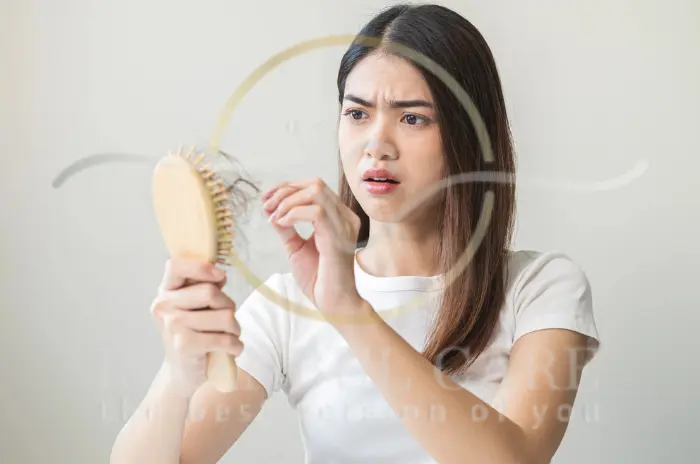Hair transplantation offers hope to millions worldwide experiencing hair loss. However, some individuals may be a not good candidate for hair transplant, making it important to assess suitability before the procedure. At Istanbul Care, we provide comprehensive consultation to determine whether hair transplant is appropriate for each individual. Understanding who may not be suitable helps ensure optimal results and patient safety.

Why Some People Are Not Good Candidate for Hair Transplant
Hair transplant success depends on multiple factors including hair loss type, overall health, and realistic expectations. Several conditions can make someone unsuitable for this procedure.
Temporary Hair Loss (telogen effluvium)
Telogen effluvium represents temporary hair loss caused by stress, illness, or hormonal changes, typically resolving within 6-12 months once triggers are addressed.
Why problematic: Surgery during active telogen effluvium risks shock loss, where healthy hair falls out due to surgical trauma. The temporary nature means natural recovery may occur without intervention.
Diffuse Hair Loss without Stable Donor Area
Diffuse hair loss affects the entire scalp uniformly, including typically “safe” donor zones. This pattern indicates advanced androgenetic alopecia or systemic causes.
Transplant challenges: Without stable donor areas providing permanent hair, transplanted follicles may continue thinning over time.
Unstable Hair Loss Patterns (e.g. alopecia areata, young age)
Alopecia Areata: Autoimmune condition causing unpredictable patchy hair loss, sometimes progressing to total hair loss.
Young Age: Patients under 25 often have unpredictable progression, making hairline planning and graft placement difficult.
Insufficient Donor Hair for Surgery
Density requirements: Adequate donor density requires 80-100 follicular units per square centimeter for optimal results. Lower densities result in sparse, unnatural appearances.
Coverage calculations: Surgeons must balance available donor hair with recipient needs.
Certain Medical Conditions (diabetes, hepatitis, HIV)
- Diabetes: Uncontrolled blood glucose impairs healing and increases infection risk
- Hepatitis B/C: Creates infection transmission risks and compromised healing
- HIV: Immunocompromised states affect healing capacity
Poor Scalp Health (infections, psoriasis, scarring)
Active Infections: Must be completely resolved before surgery to prevent complications.
Psoriasis: Active scalp psoriasis interferes with healing and creates unpredictable results.
Scarring: Conditions like lichen planopilaris may prevent successful graft placement.
Pregnancy as a Contra‒indicator
Pregnancy creates several concerns including hormonal fluctuations affecting hair cycles, medication restrictions, and potential stress affecting both mother and fetal health.
Mental Health Conditions (trichotillomania, body dysmorphic disorder)
Trichotillomania: Compulsive hair pulling can damage transplanted grafts.
Body Dysmorphic Disorder: Patients often have unrealistic expectations and may never be satisfied with results.
Unrealistic Expectations and Lifestyle Risks (like smoking)
Unrealistic Expectations: Patients expecting complete restoration or immediate results may be disappointed.
Smoking: Nicotine reduces oxygen delivery to tissues, significantly impairing graft survival.
Who Is a Good Candidate for a Hair Transplant
Understanding ideal candidacy helps identify patients most likely to achieve excellent results.
Stable Hair Loss Pattern and Age over 25
Pattern stability over 12-24 months allows accurate prediction of future hair loss areas. Patients over 25 typically have more predictable patterns and realistic expectations.
Healthy General Condition and Good Recovery Ability
Good circulation ensures adequate blood supply for graft survival. Healthy immune systems promote proper healing while adequate nutrition supports hair growth.
Adequate Donor Hair Density
Quality assessment includes thick, coarse hair providing better coverage. Donor areas should maintain 2-2.5 hairs per follicular unit for optimal results.
Absence of Active Scarring Alopecia or Autoimmune Hair Loss
Hair loss should result from androgenetic alopecia rather than active inflammatory processes. Any autoimmune conditions should be inactive for at least 12 months.
Key Factors Determining Hair Transplant Suitability
Age and Its Impact on Hair Transplant Results
Most surgeons prefer patients aged 25-65 when patterns are predictable and healing capacity remains good. Young patients require careful evaluation while elderly patients need health assessment.
The Role of Donor Hair Quality and Density
Hair characteristics like texture and color affect coverage. Follicular units with higher hair counts provide better density than single-hair units.
How Medical Conditions Affect Eligibility
Well-controlled chronic conditions may be acceptable while active, unstable conditions require treatment first. Some medications affect healing or interact with procedures.

Alternatives for Non-Ideal Hair Transplant Candidates
Medications to Slow Hair Loss
Finasteride: FDA-approved medication reducing DHT levels, slowing androgenetic alopecia progression in men.
Minoxidil: Topical treatment improving blood flow to follicles, available for both men and women.
Dutasteride: More potent DHT inhibitor, sometimes used off-label.
Non-Surgical Hair Restoration Options
PRP Therapy: Concentrated growth factors stimulate hair growth.
Laser Therapy: Red light wavelengths stimulate cellular activity in follicles.
Scalp Micropigmentation: Tattooing creating illusion of hair follicles.
Important Eligibility Criteria for Hair Transplant
Medical Conditions and Medications to Review
| Condition/Medication | Consideration | Action Required |
|---|---|---|
| Uncontrolled Diabetes | Impaired healing | Blood sugar control |
| Blood Thinners | Increased bleeding | Temporary discontinuation |
| Autoimmune Conditions | Unpredictable results | Stability assessment |
| Active Infections | Contamination risk | Complete treatment first |
Overall Health and Scalp Condition
Adequate scalp elasticity ensures comfortable graft placement. Good vascular supply ensures graft survival while previous surgeries may affect planning.
Realistic Expectations and Age Factors
Thorough consultations align patient expectations with achievable results. Patients must understand hair loss may continue, requiring additional procedures.
Alternative Solutions for Unsuitable Candidates
Medications to Manage Hair Loss
Combination therapy using multiple medications often provides better results than single agents. Regular follow-ups allow therapy optimization based on individual response.
Non-Surgical Hair Restoration Treatments
PRP Protocols: Multiple sessions over 3-6 months typically required with maintenance treatments.
Laser Therapy: Consistent use over 6-12 months necessary for density improvements.
Combination Approaches: Multiple treatments often provide synergistic benefits.
Medical Factors That Determine Eligibility
Optimal Age Range for Best Transplant Results
Patients aged 30-50 often achieve optimal results with stable patterns and good healing. Younger patients require family history evaluation while older patients need health assessment.
Health Conditions That May Prevent Surgery
| Condition Type | Examples | Classification |
|---|---|---|
| Absolute Contraindications | Active cancer treatment, severe bleeding disorders | Surgery not recommended |
| Relative Contraindications | Controlled diabetes, stable cardiac conditions | Case-by-case evaluation |
Importance of Scalp Health and Elasticity
Physical examination and scalp mobility tests evaluate surgical feasibility. Scalp massage and topical treatments may improve candidacy in some cases.
Speak with our expert Hair Transplantation specialists

Speak with our expert Hair Transplantation specialists
We’re ready to answer your questions
Frequently Asked Questions
A good candidate has stable androgenetic alopecia with predictable patterns, adequate donor hair density, good overall health, and realistic expectations. They should be over 25 with no active scalp conditions or autoimmune disorders. The donor area must have sufficient permanent hair, and patients should understand procedure limitations and maintenance requirements.
Stable patterns allow surgeons to predict future progression and plan appropriate graft placement. Transplanting into areas that may continue losing hair creates unnatural patches surrounded by continued baldness. Stability observed over 12-24 months ensures transplanted hair blends naturally long-term.
Generally, active alopecia areata contraindications transplant because autoimmune processes can attack transplanted hair. The unpredictable nature makes planning difficult. However, patients with long-term stable alopecia areata (inactive over 12 months) may be considered case-by-case after thorough evaluation.
The donor area must provide sufficient healthy, permanent hair unaffected by pattern baldness throughout life. Surgeons evaluate donor density, hair quality, and stability. Without adequate donor hair, transplantation results in sparse coverage or noticeable donor thinning.
Yes, conditions including uncontrolled diabetes, active hepatitis or HIV with low immunity, bleeding disorders, active scalp infections, autoimmune conditions, and psychiatric conditions like trichotillomania may prevent surgery. Pregnancy, cancer treatment, and severe cardiac conditions are also contraindications.
No strict upper limit exists, but surgeons prefer patients over 25 when patterns become predictable. Very young patients may experience continued aggressive loss compromising results. Elderly patients require health evaluation but aren’t automatically excluded. Stable patterns matter more than age.
Diffuse thinning including donor areas typically makes transplant unsuitable because no stable donor hair exists. Without permanent donor hair, transplanted follicles may continue thinning. Some patients may benefit if relatively stable donor areas exist, understanding limitations.
Alternatives include medications like finasteride and minoxidil, PRP therapy, laser therapy, scalp micropigmentation, and hair replacement systems. Combination approaches often provide optimal results for unsuitable candidates. Professionals at our intermediary organization help determine the best alternative approach for each individual situation.

